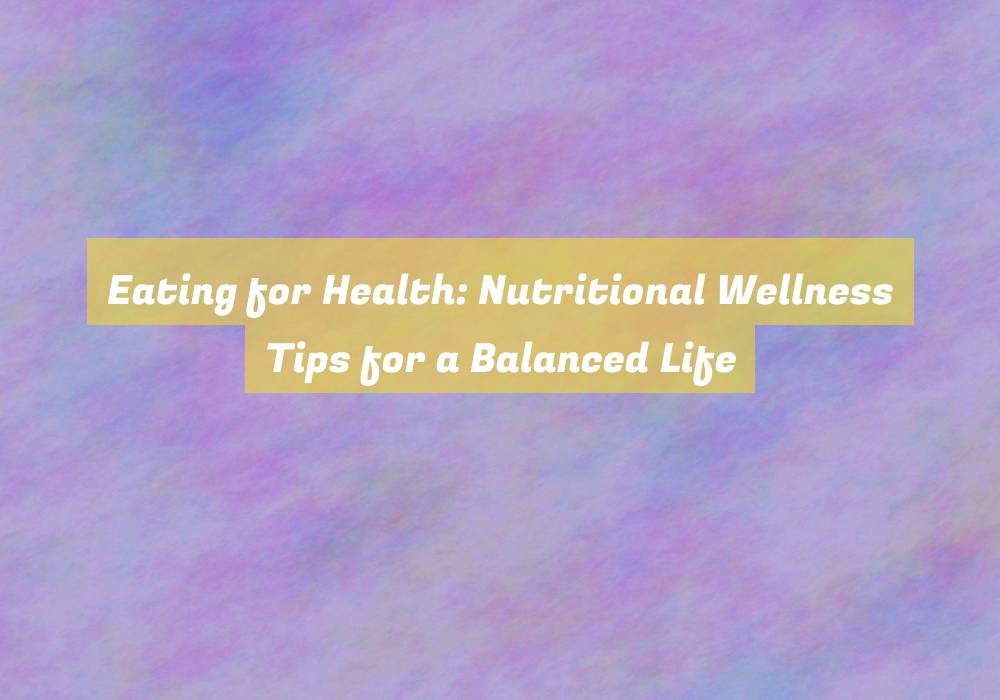Eating for Health: Nutritional Wellness Tips for a Balanced Life
When it comes to your health, think of your body as a well-oiled machine, requiring the right fuel to function at its best.
But with the abundance of dietary advice out there, it can be overwhelming to know where to start.
DonG??t worry, though. There are simple, practical steps you can take to make informed choices about what you eat and how you nourish your body.
In this discussion, weG??ll explore key nutritional wellness tips that can help you achieve a balanced and healthy life.
Understanding Macronutrients
To achieve nutritional wellness, itG??s essential to understand macronutrients and their role in your overall health and well-being. Macronutrients are the nutrients that provide energy and are needed in large amounts in your diet. They include carbohydrates, proteins, and fats.
Carbohydrates are the bodyG??s primary source of energy, providing fuel for your brain, muscles, and organs. They can be found in foods like fruits, vegetables, whole grains, and legumes.
Proteins are essential for building and repairing tissues, as well as for making enzymes and hormones. Foods like meat, fish, eggs, dairy, and plant-based sources like beans and nuts are rich in protein.
Fats are also crucial for energy, as well as for absorbing certain vitamins and supporting cell growth. Healthy sources of fats include avocados, nuts, seeds, and olive oil.
Understanding the role of each macronutrient in your diet can help you make informed choices about the foods you eat, leading to better overall health and wellness.
Incorporating Whole Foods
Understanding macronutrients lays the foundation for incorporating whole foods into your diet, ensuring that you receive a wide array of essential nutrients for optimal health and wellness. Whole foods, such as fruits, vegetables, whole grains, lean proteins, and healthy fats, are packed with vitamins, minerals, fiber, and antioxidants that are beneficial for your overall well-being. When you incorporate whole foods into your meals, youG??re fueling your body with nutrient-dense options that can help support your immune system, improve digestion, and boost energy levels.
One simple way to start incorporating whole foods into your diet is by filling half your plate with colorful fruits and vegetables at each meal. This ensures that youG??re getting a variety of vitamins and minerals. Additionally, choosing whole grains like quinoa, brown rice, or oats over refined grains can increase your fiber intake and provide longer-lasting energy.
Opting for lean proteins such as chicken, fish, tofu, or legumes, along with healthy fats like avocados, nuts, and olive oil, can further enhance the nutritional value of your meals. By prioritizing whole foods, you can nourish your body with the essential nutrients it needs to thrive.
Balancing Portion Sizes
Balancing portion sizes is crucial for maintaining a healthy and balanced diet. When dishing up your meals, itG??s important to be mindful of portion sizes to ensure youG??re not overeating. Start by using smaller plates and bowls to help control portion sizes. This simple trick can prevent you from loading up on more food than your body actually needs.
Additionally, try to fill half your plate with vegetables, a quarter with lean protein, and the remaining quarter with whole grains. This method can help you visualize balanced portion sizes and make it easier to create well-rounded meals.
When snacking, avoid eating straight from the package, as it can lead to mindless overeating. Instead, portion out your snacks into small containers or bags to prevent consuming more than intended. Being aware of portion sizes can also help you enjoy your favorite treats without overindulging.
Prioritizing Nutrient-Dense Choices
When it comes to maintaining a balanced diet, one effective approach is prioritizing nutrient-dense choices over empty-calorie options. Nutrient-dense foods provide essential vitamins, minerals, and other beneficial compounds without excess calories, making them a key component of a healthy eating plan. Instead of reaching for processed snacks or sugary treats, opt for whole foods like fruits, vegetables, lean proteins, whole grains, and healthy fats. These nutrient-dense choices not only nourish your body but also support overall well-being.
Conclusion
In conclusion, by understanding macronutrients, incorporating whole foods, balancing portion sizes, and prioritizing nutrient-dense choices, you can achieve a balanced and healthy lifestyle.
Remember to make small, sustainable changes to your diet and focus on nourishing your body with the right nutrients.
With these tips in mind, you can improve your overall health and well-being, and enjoy the benefits of a nutritious and balanced diet.
Keep making smart choices and taking care of your body.





